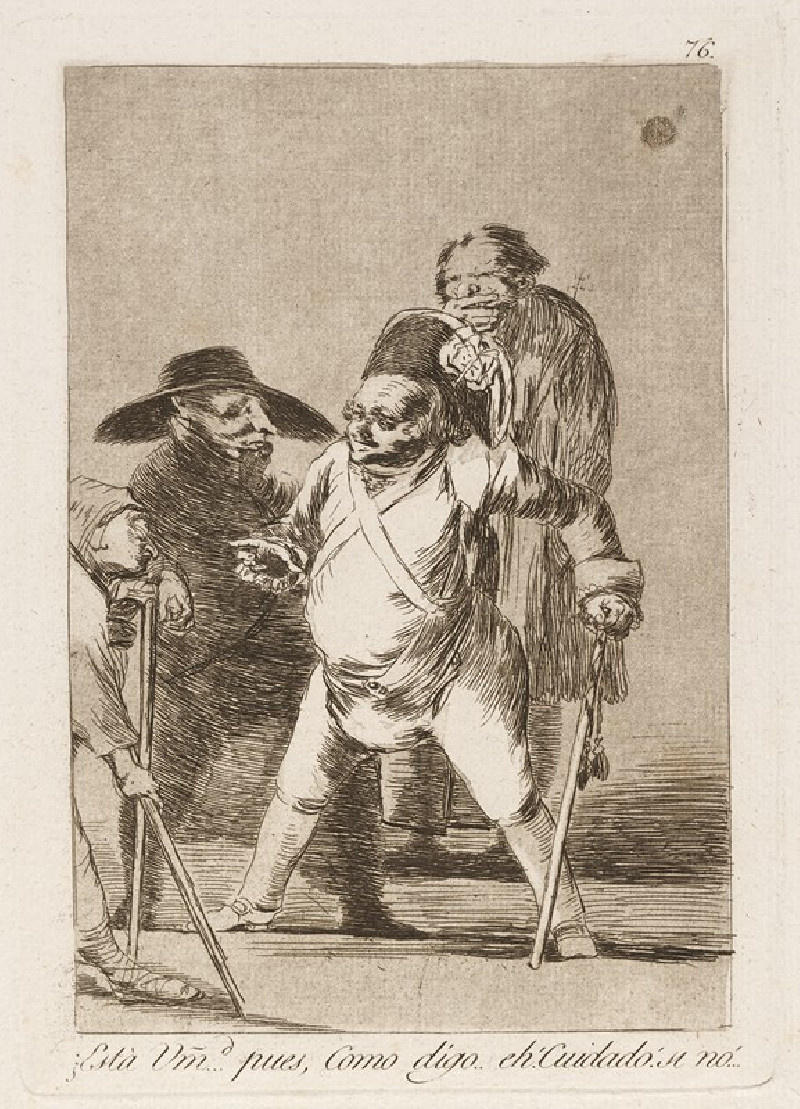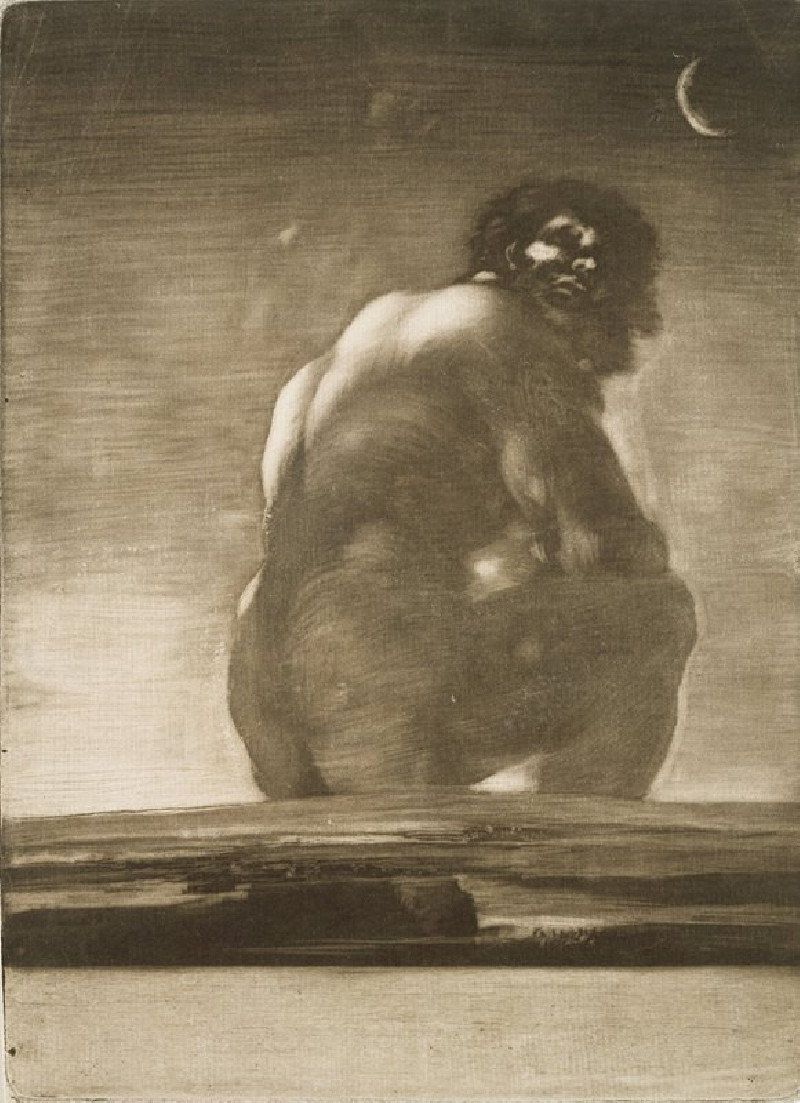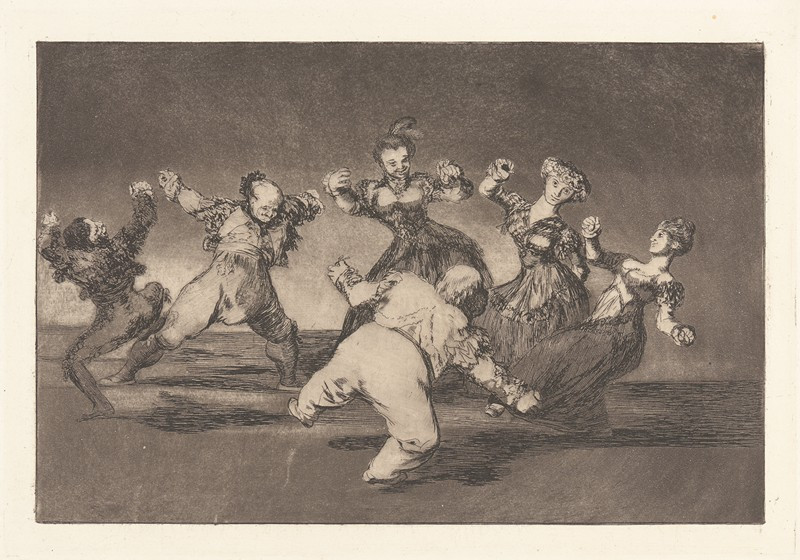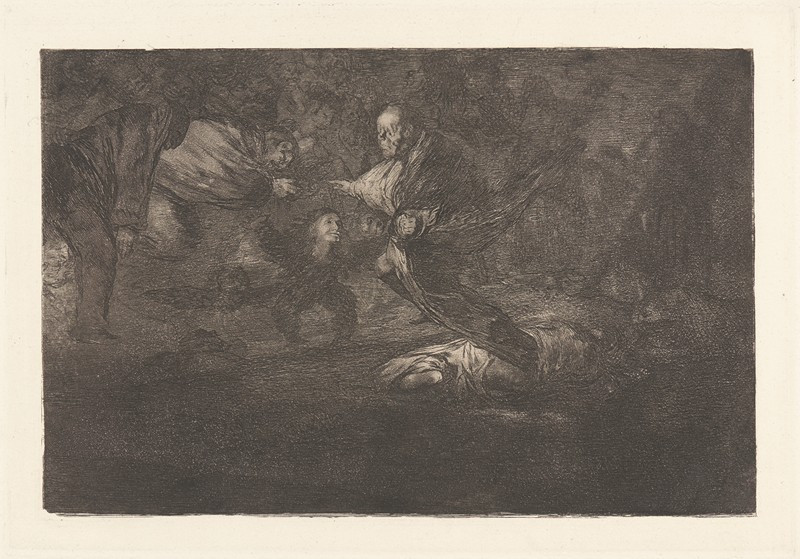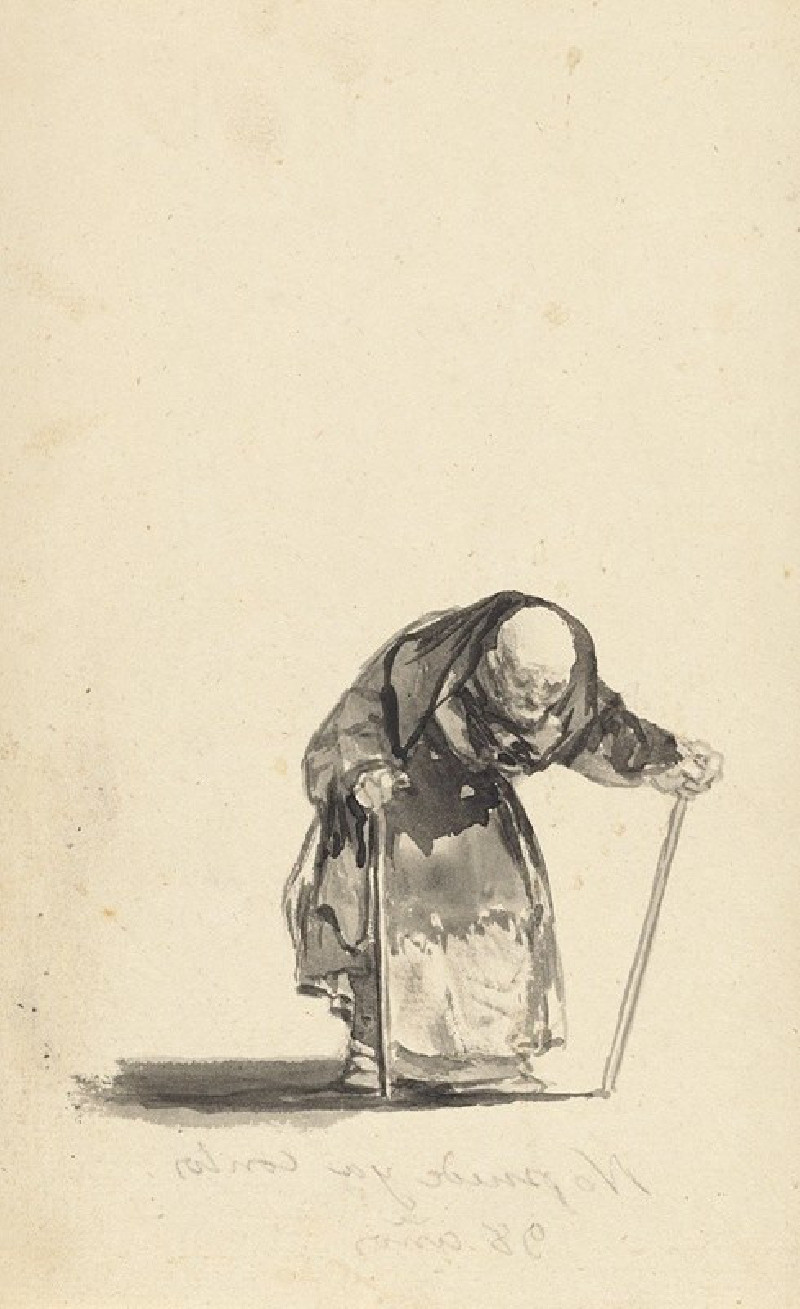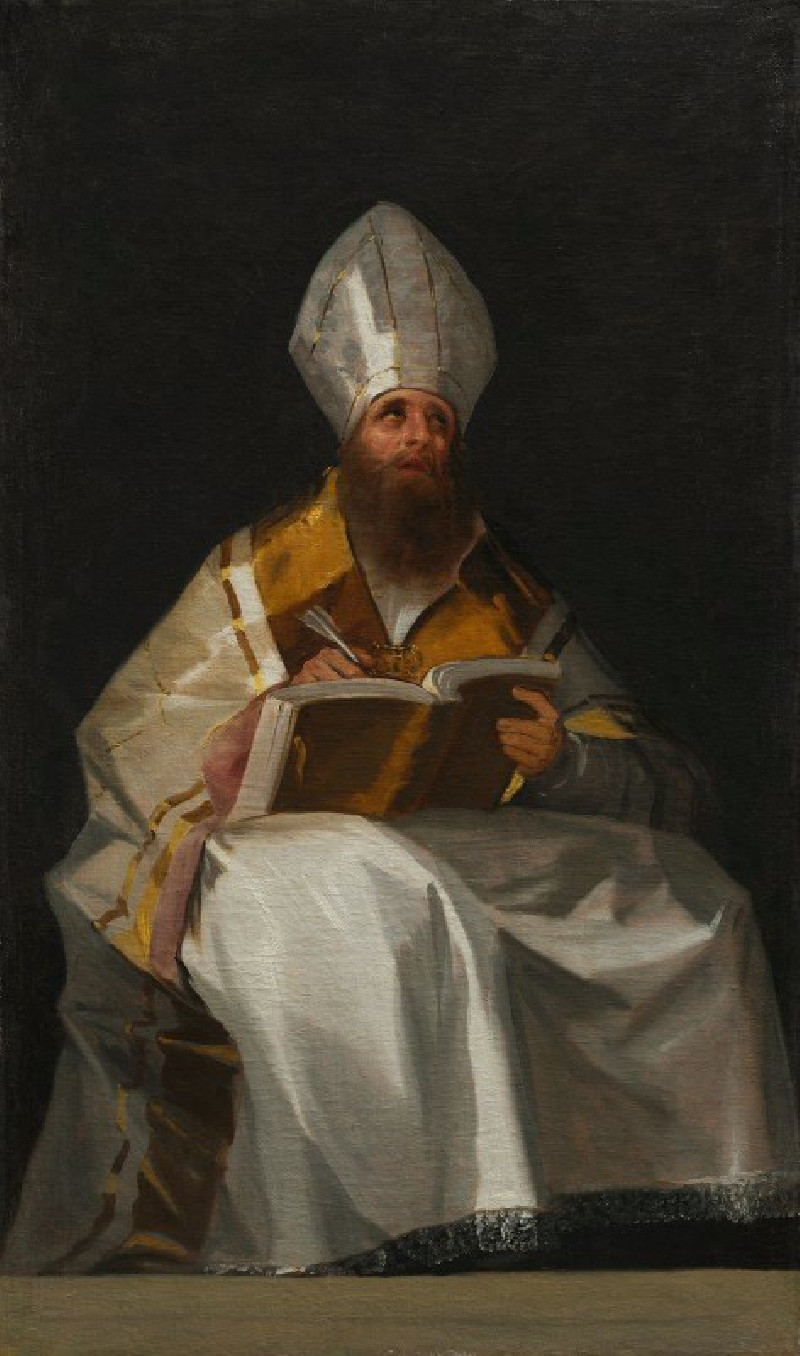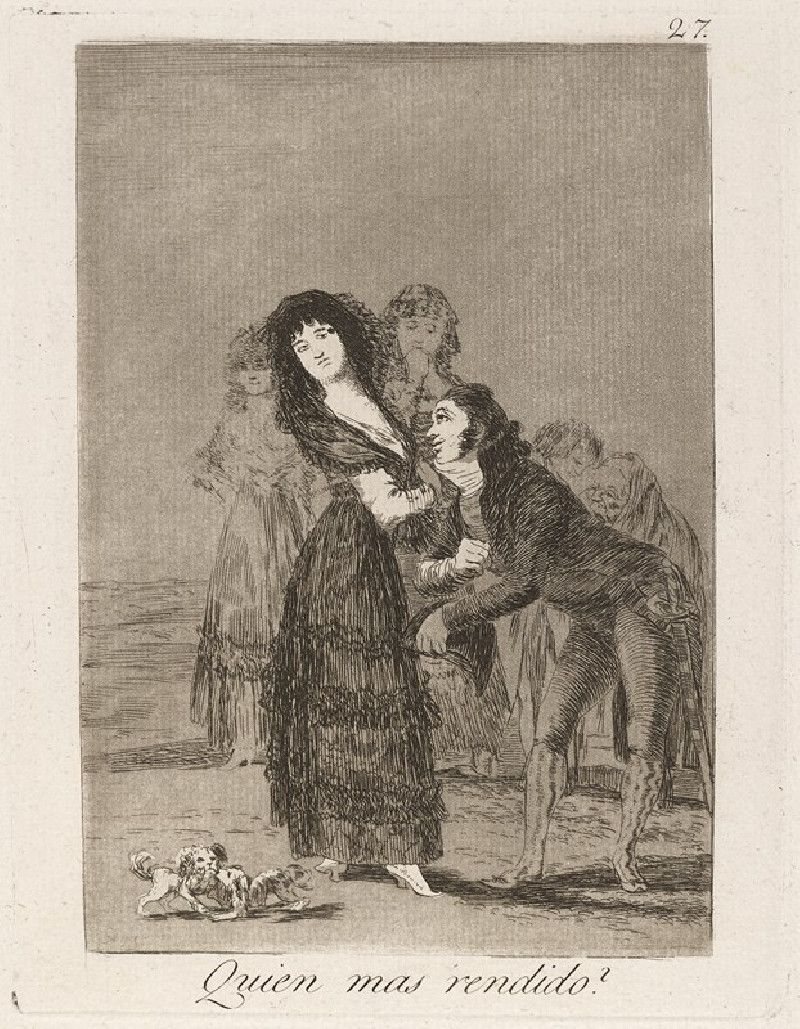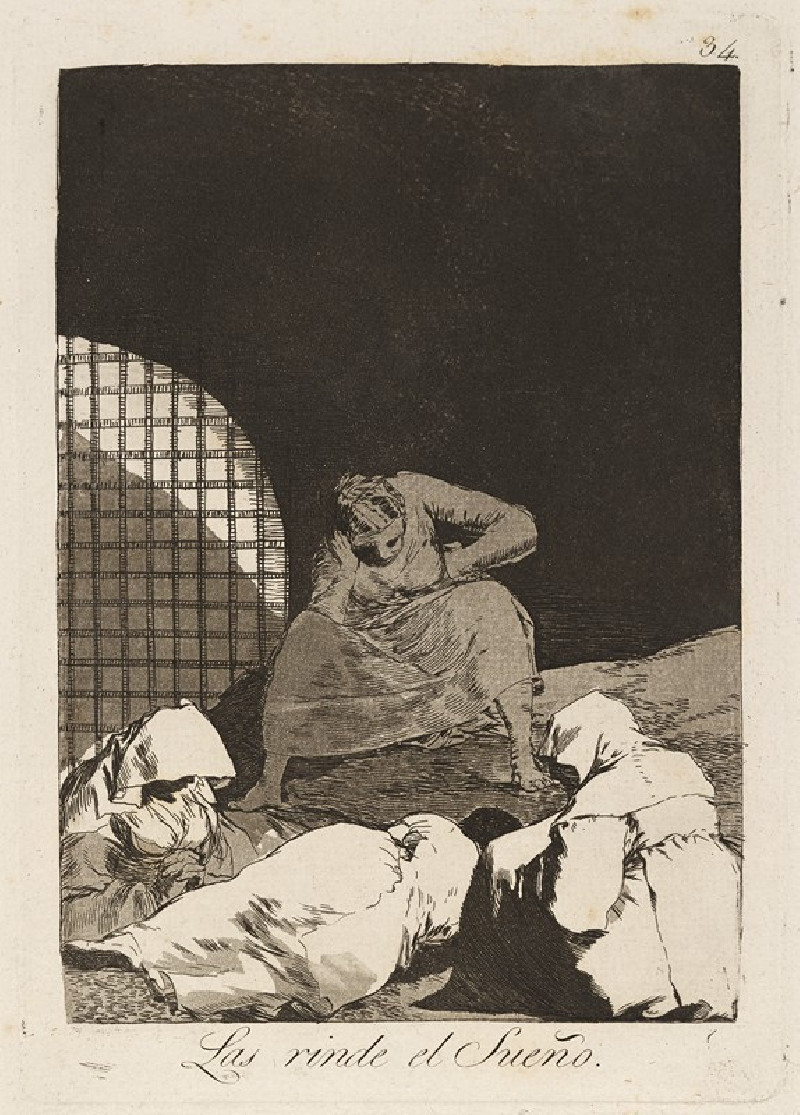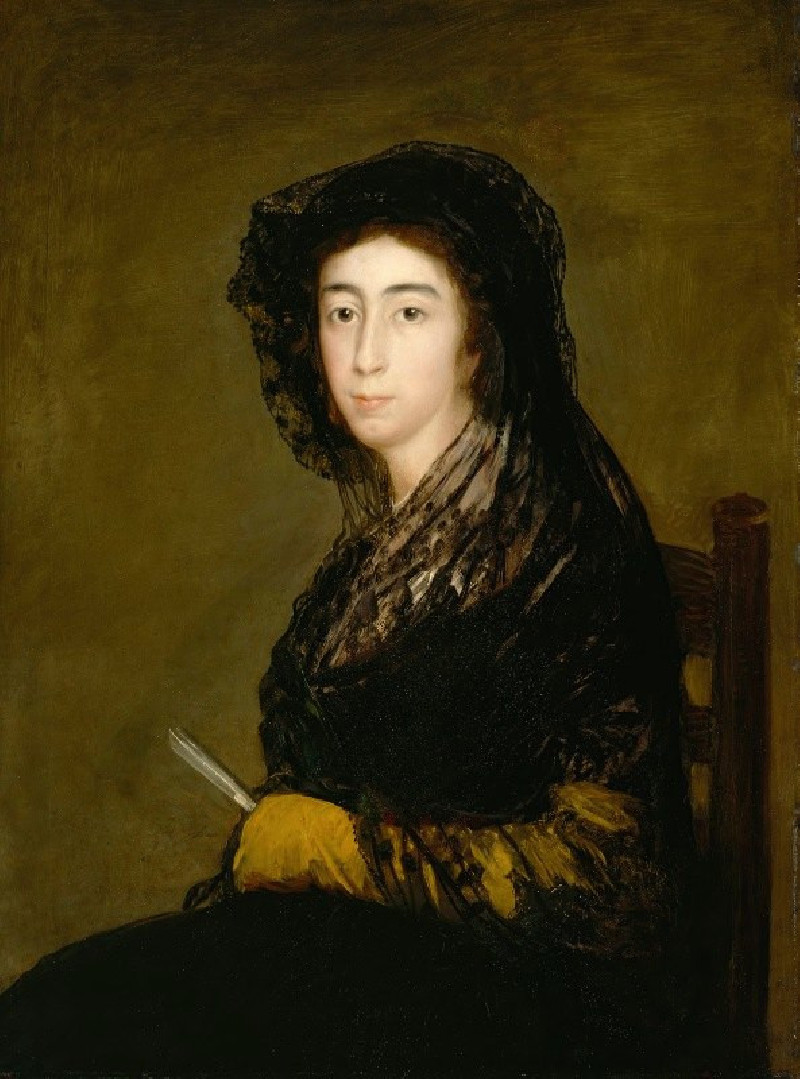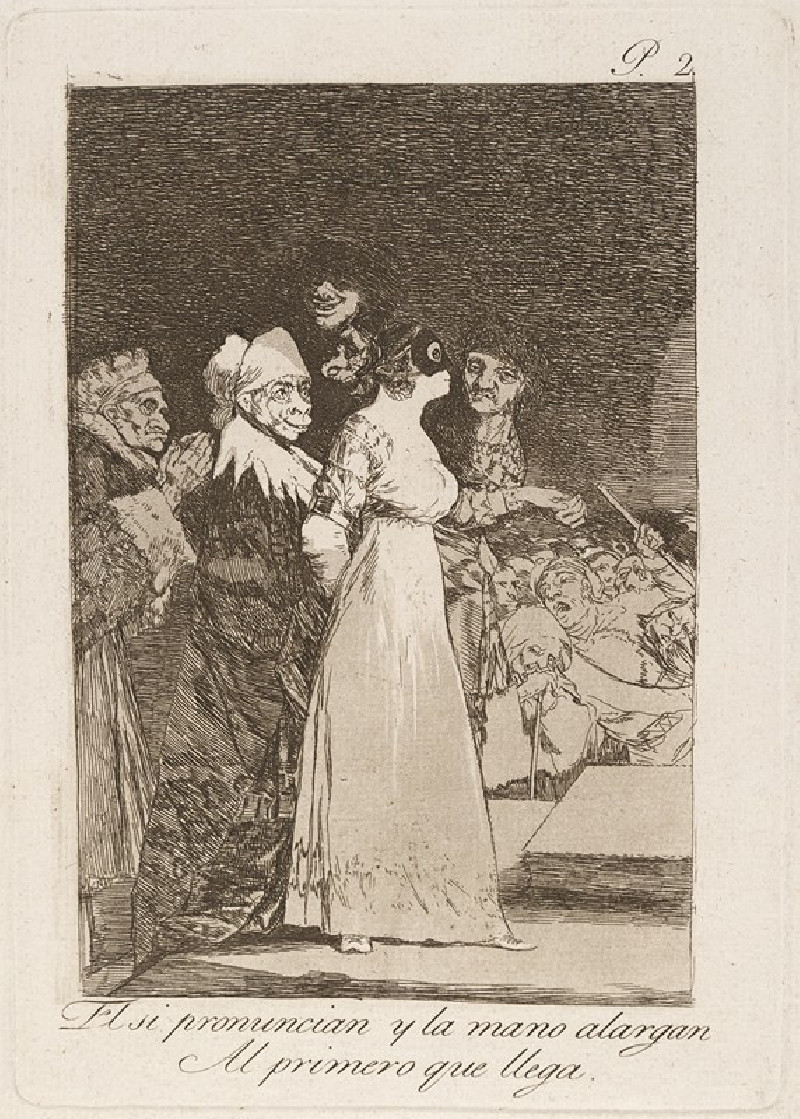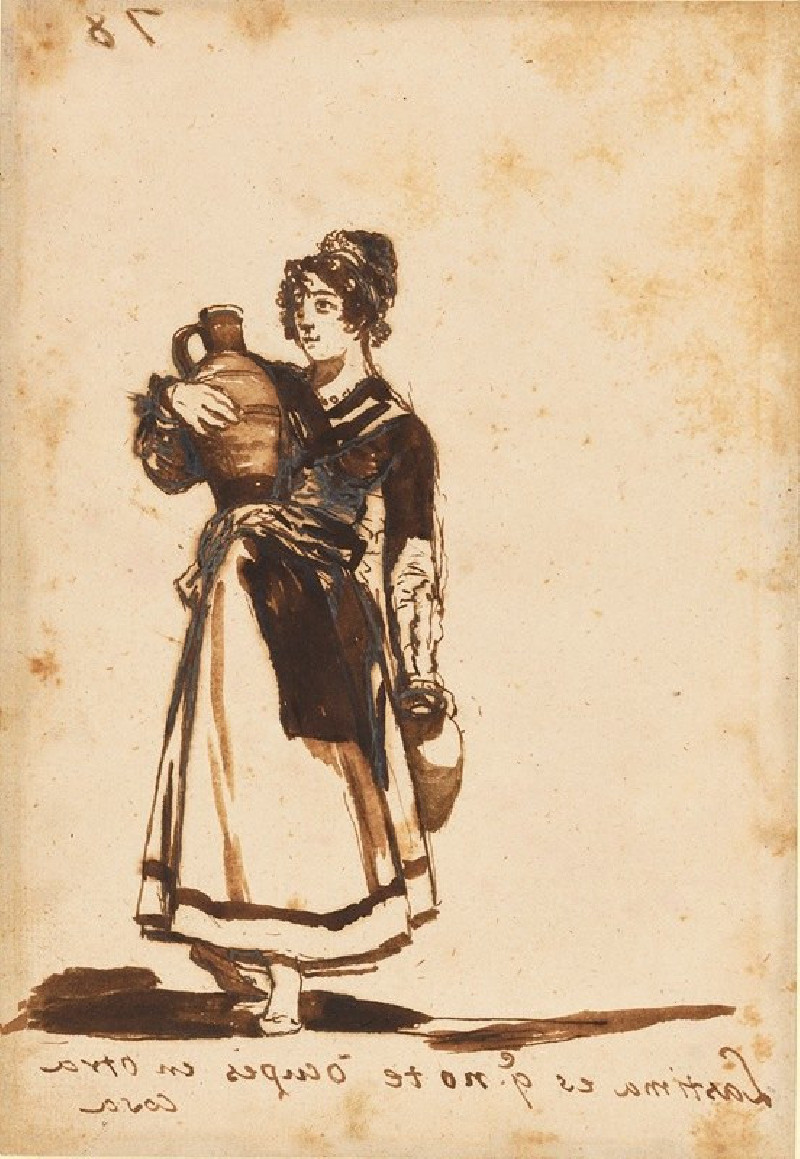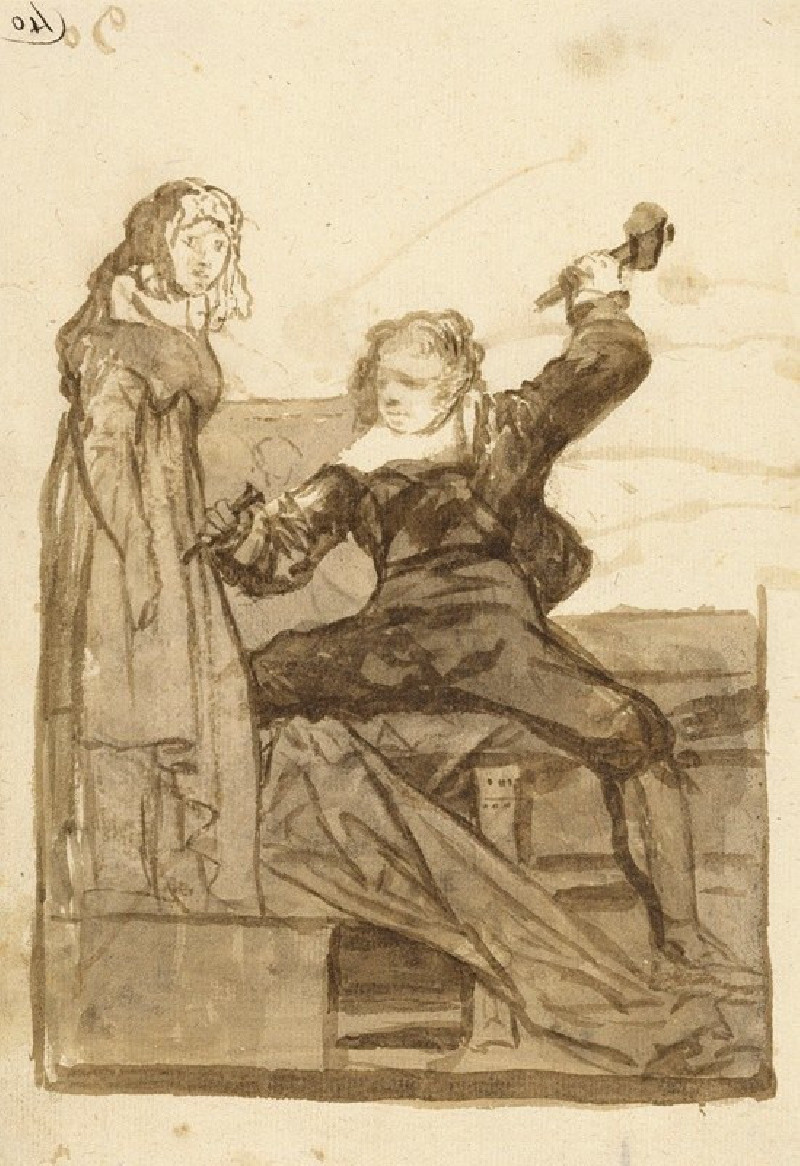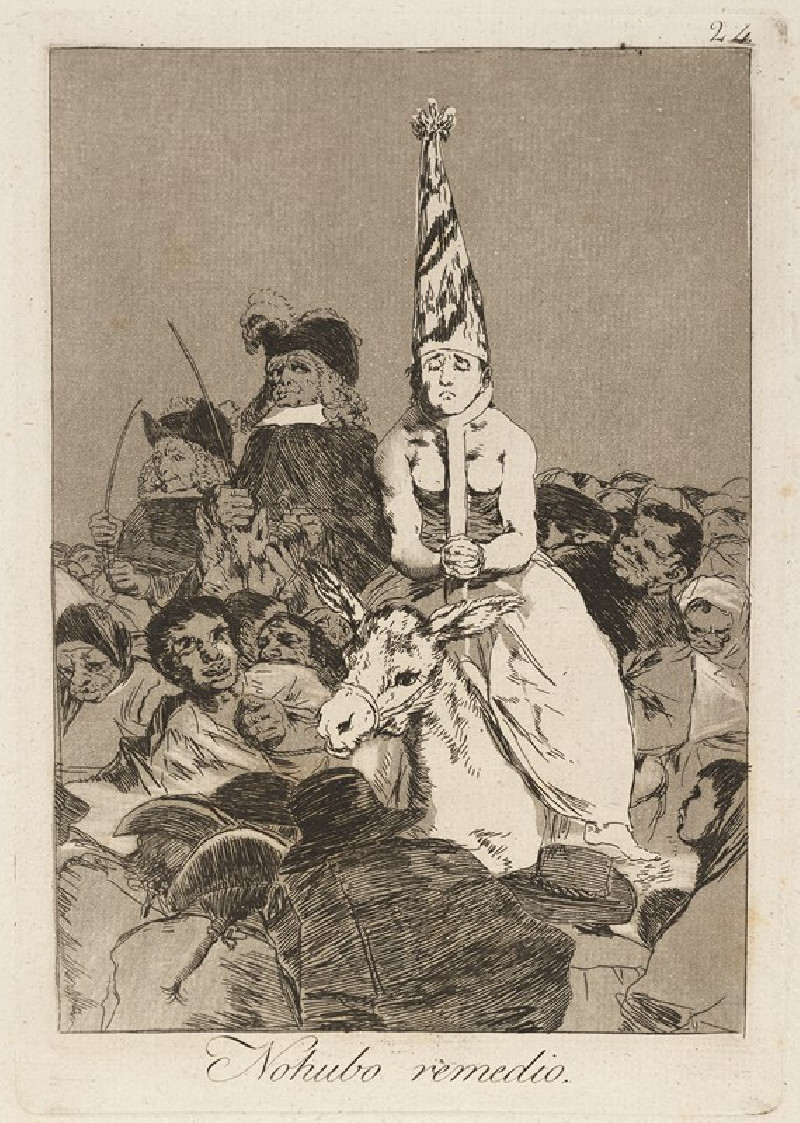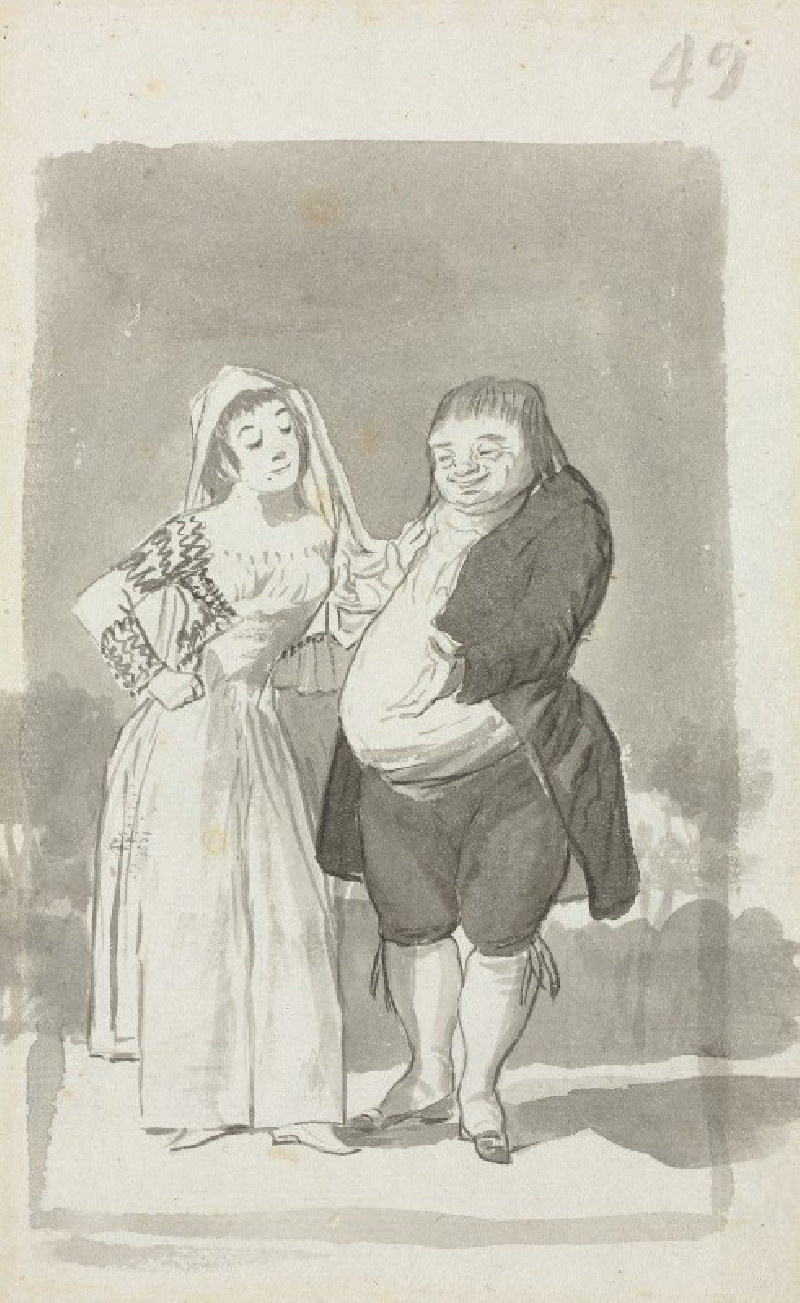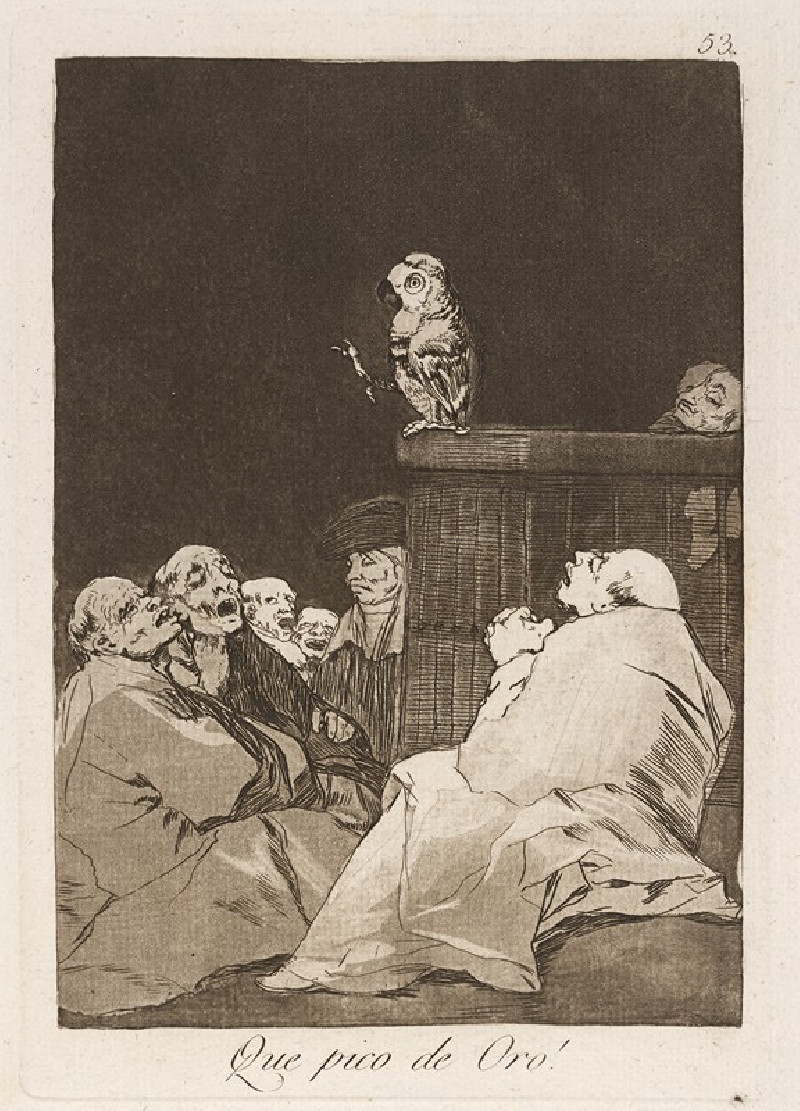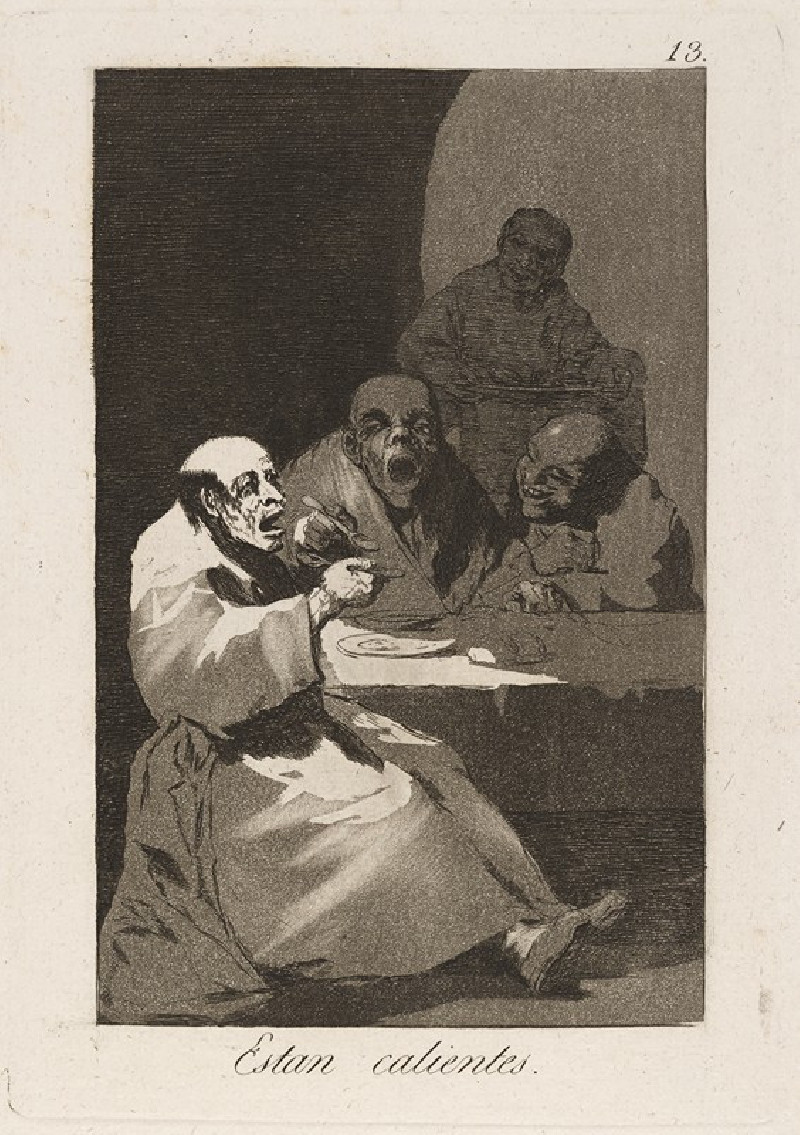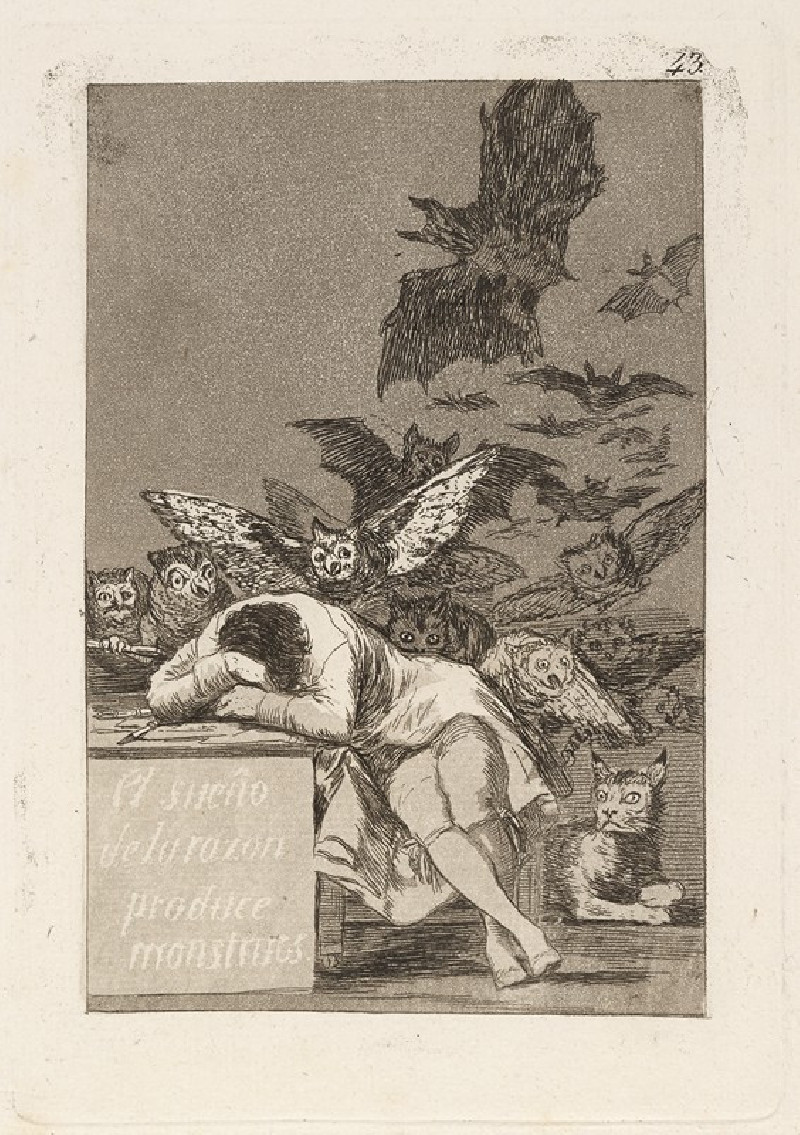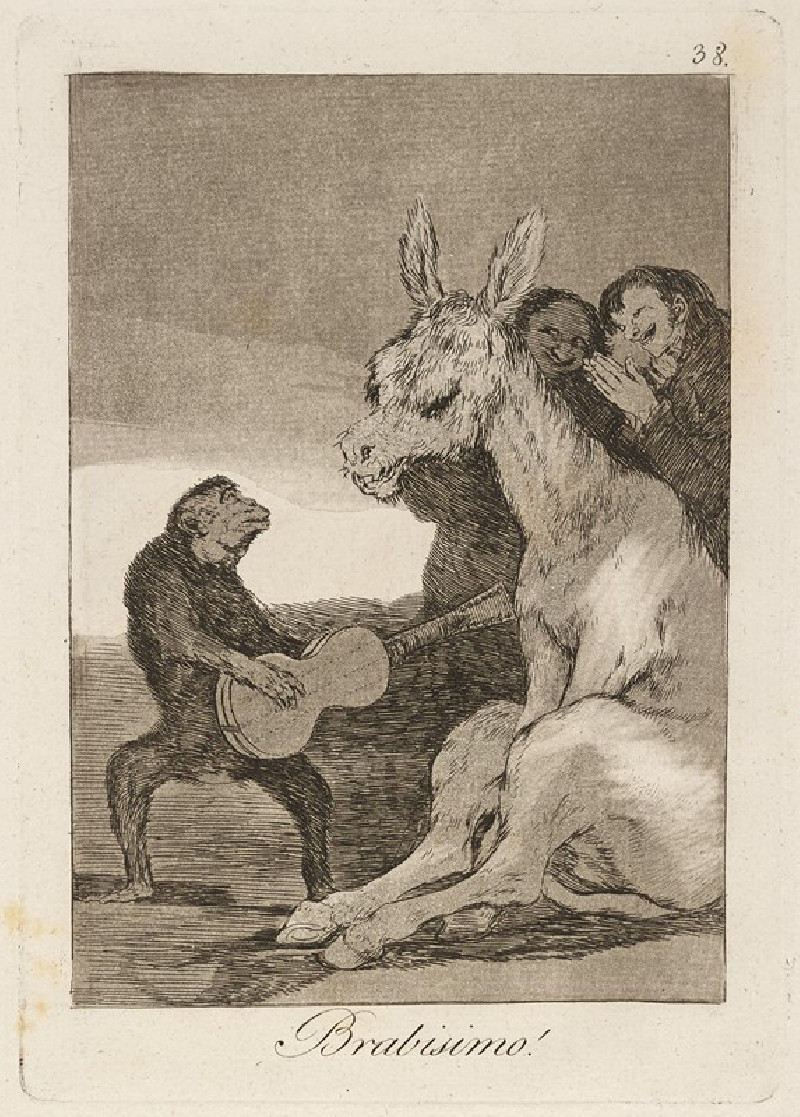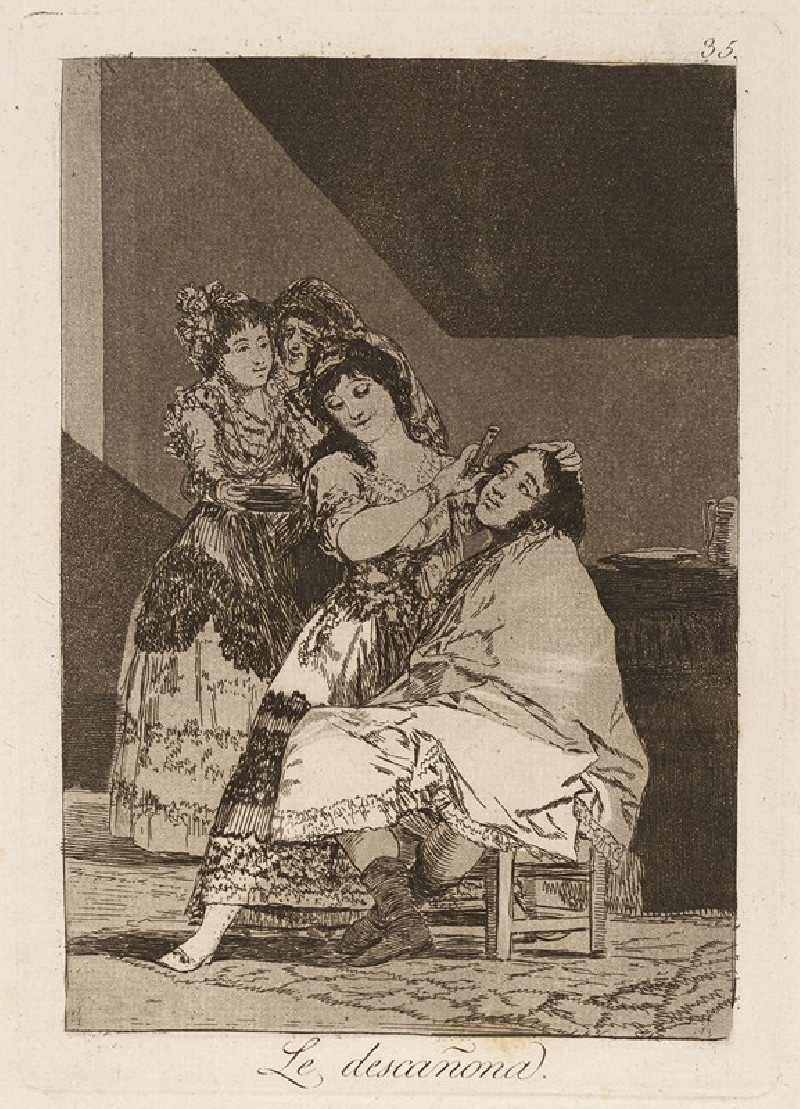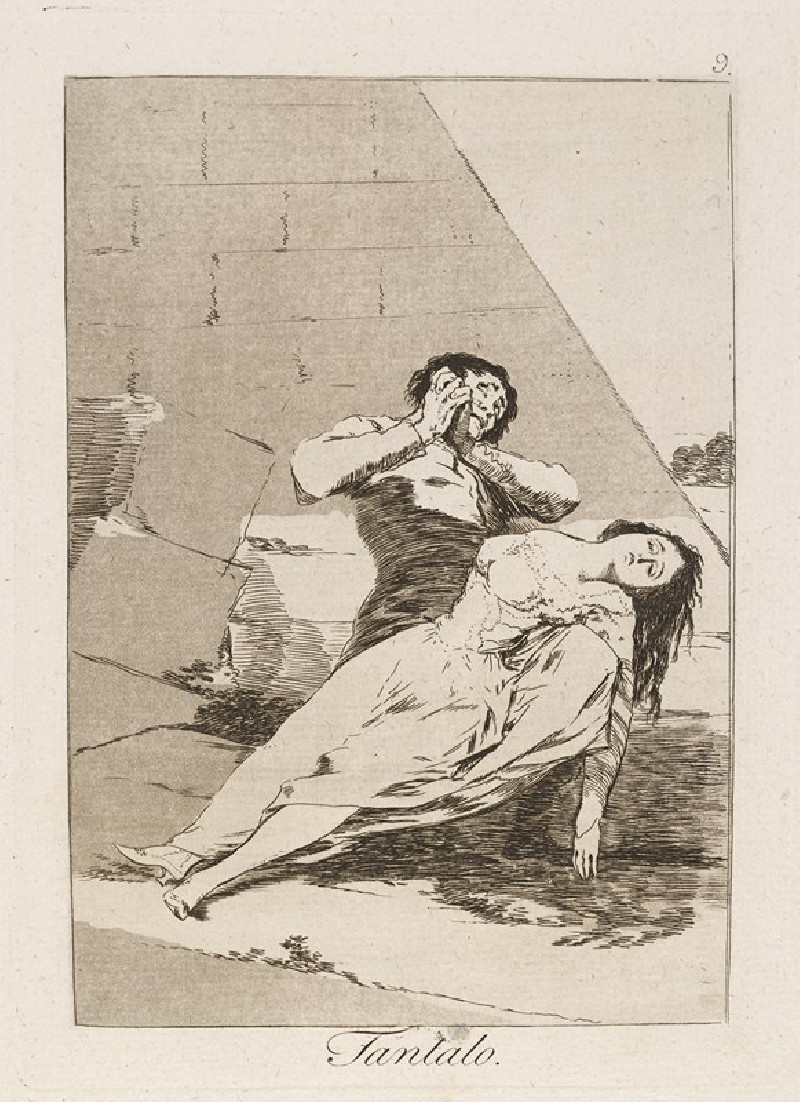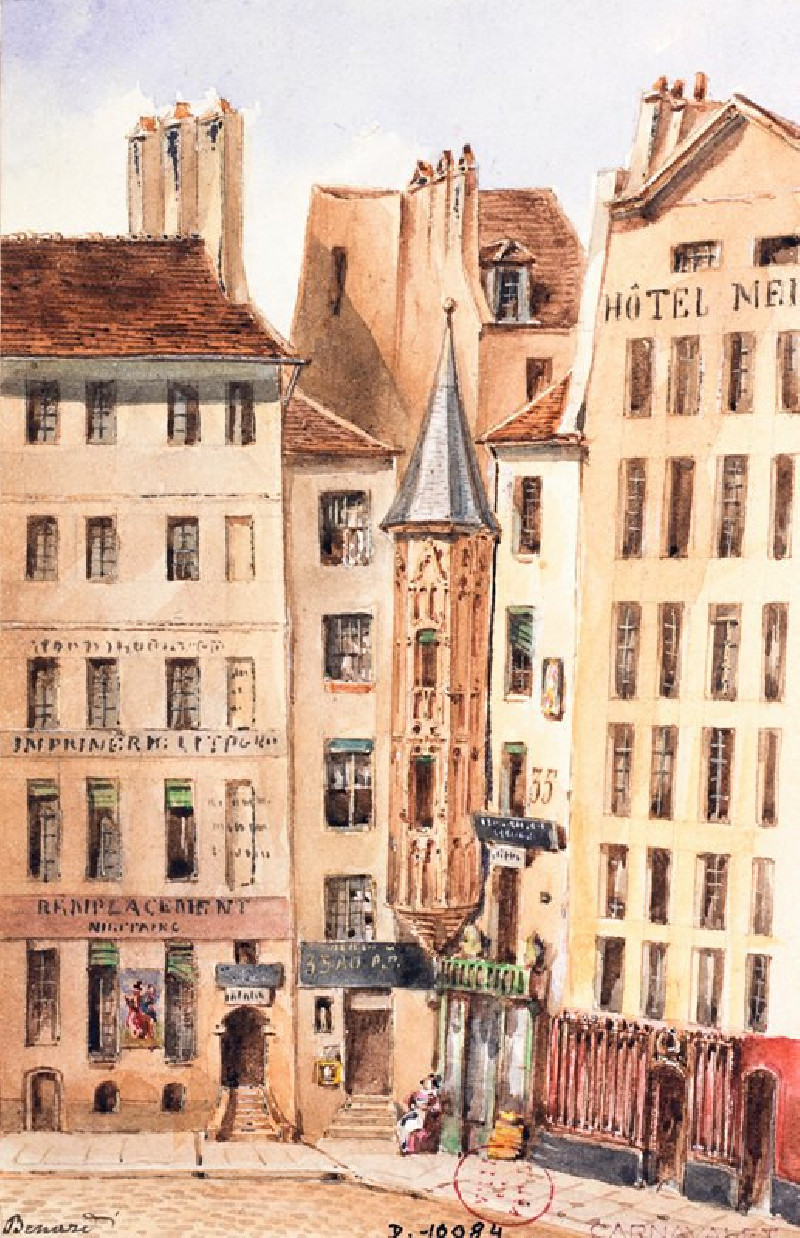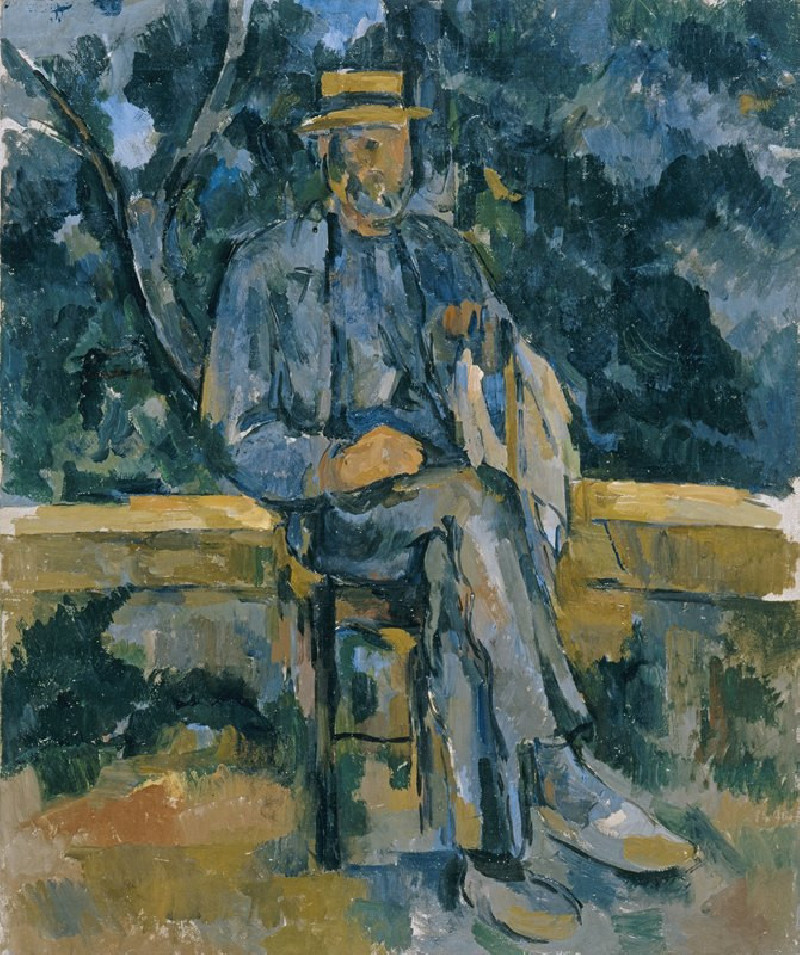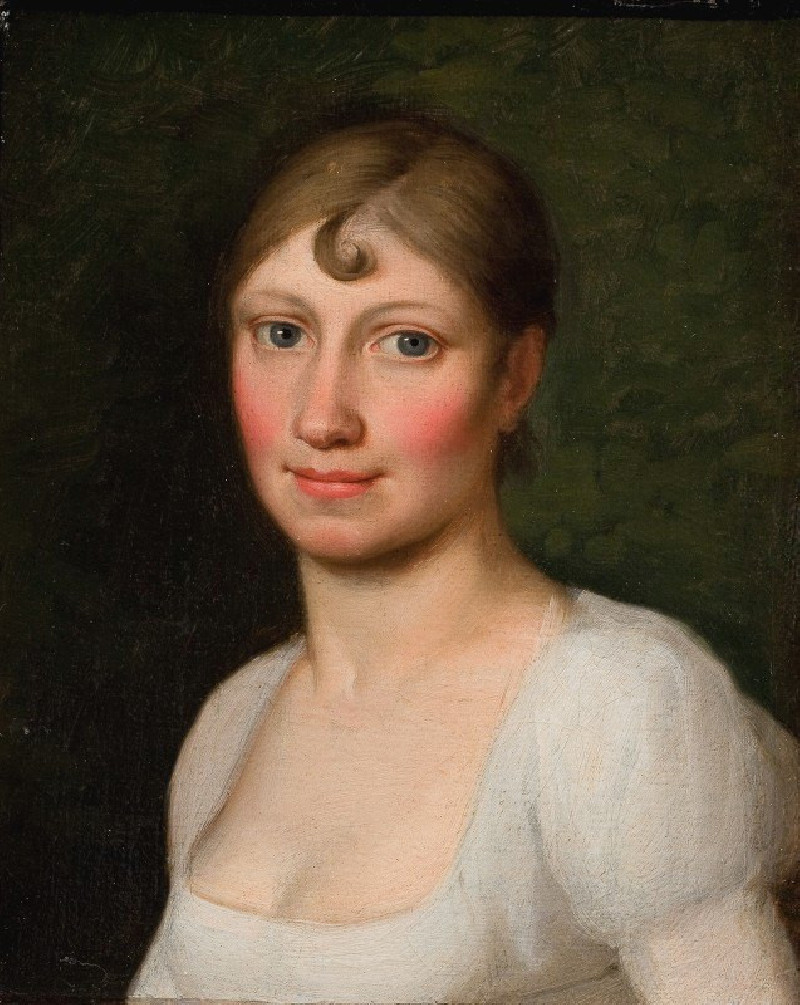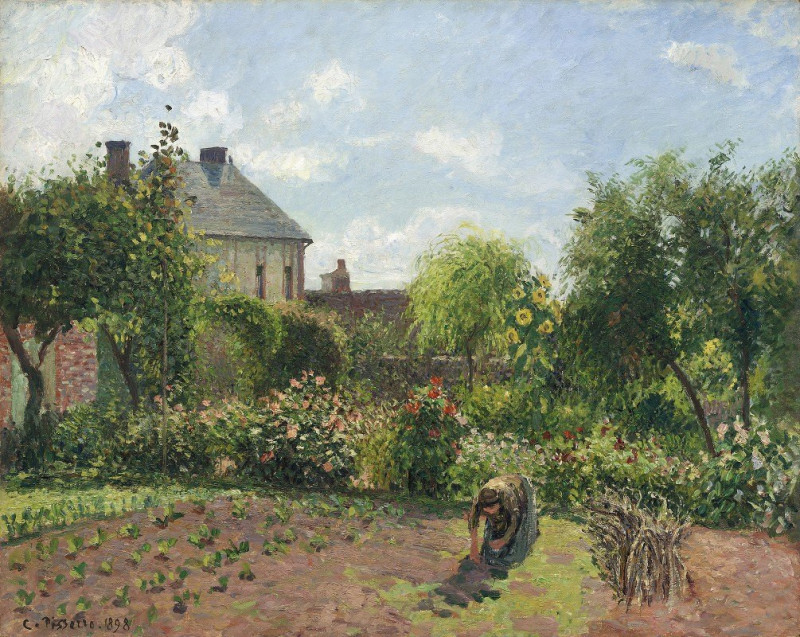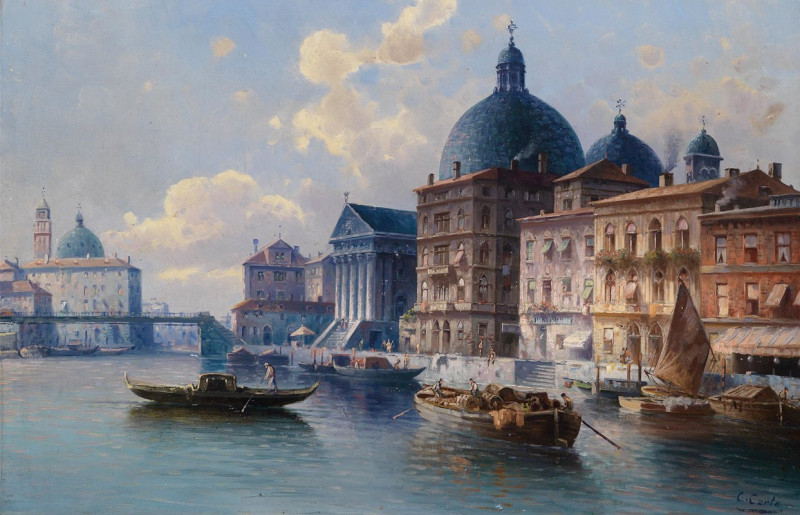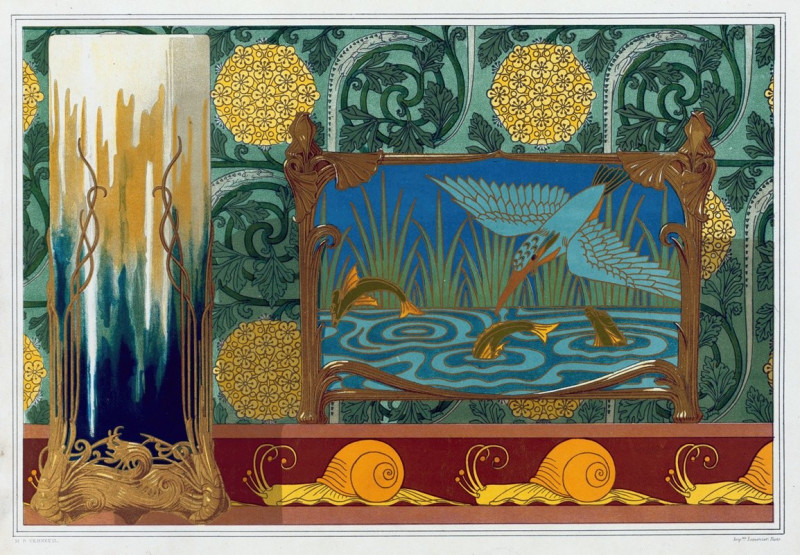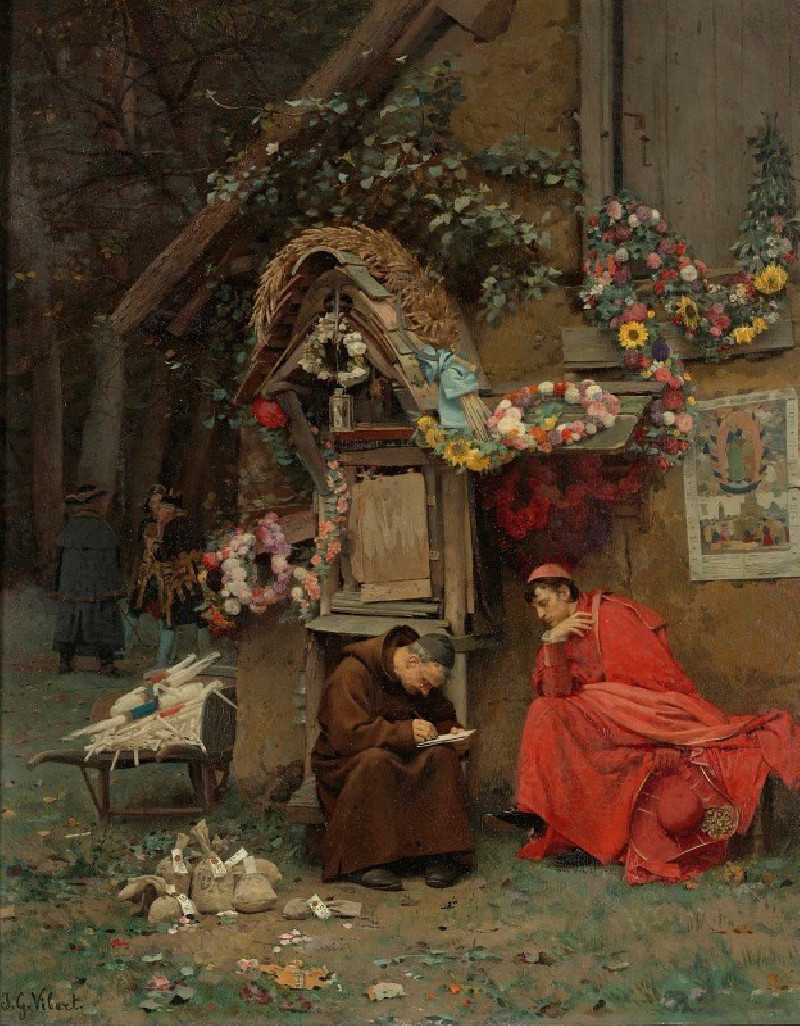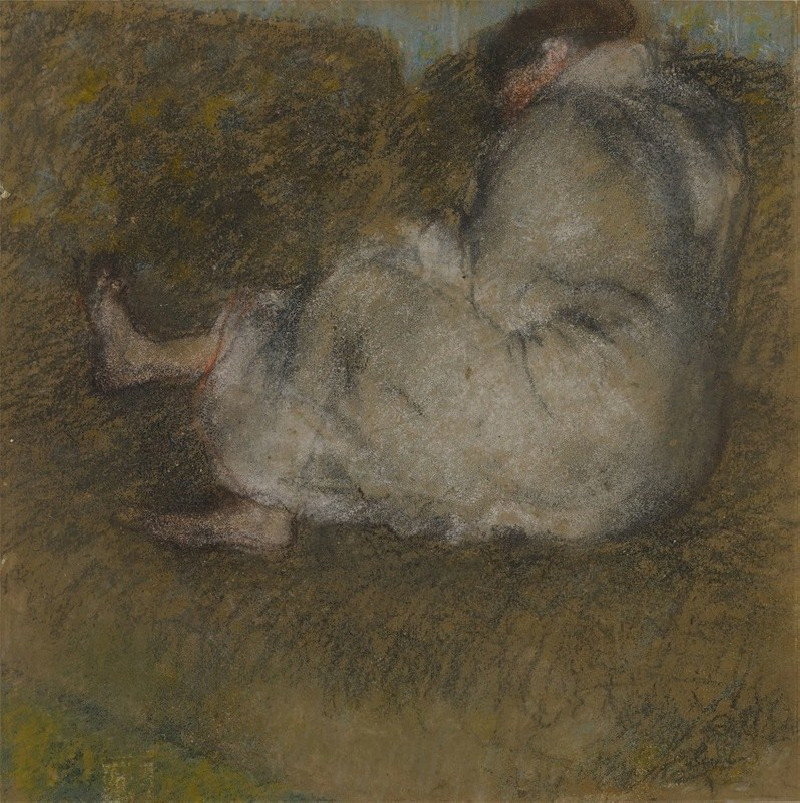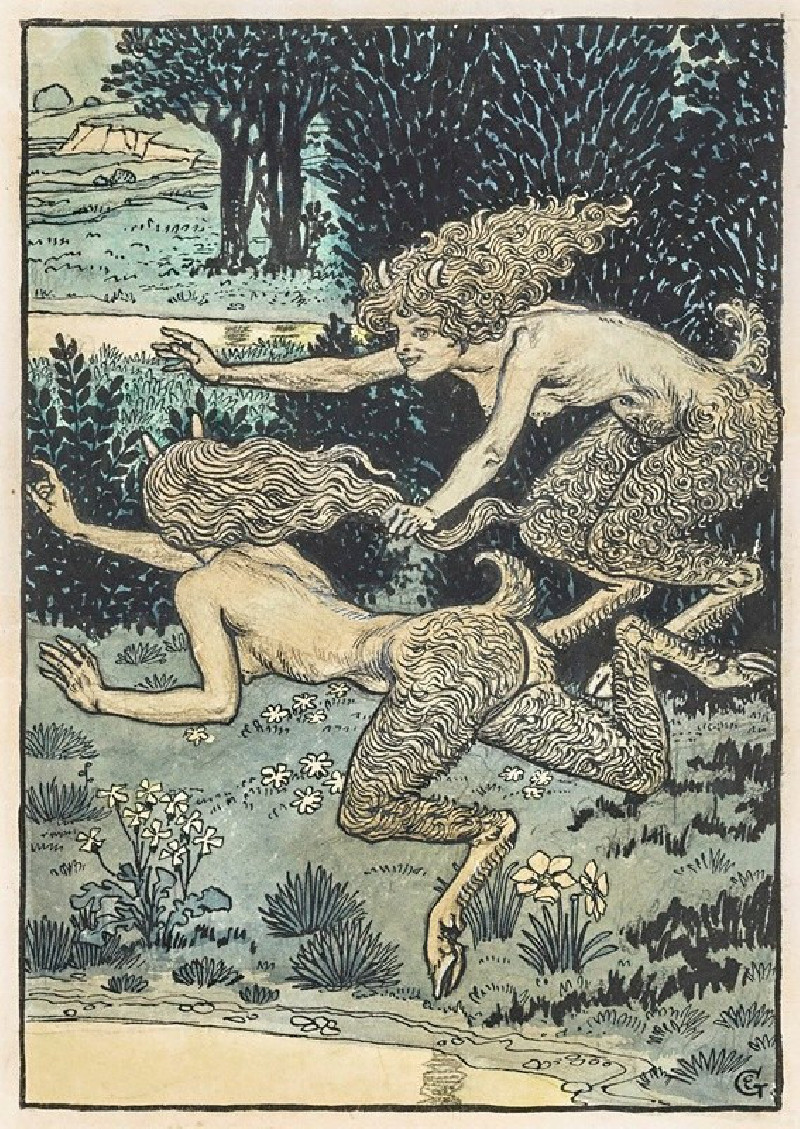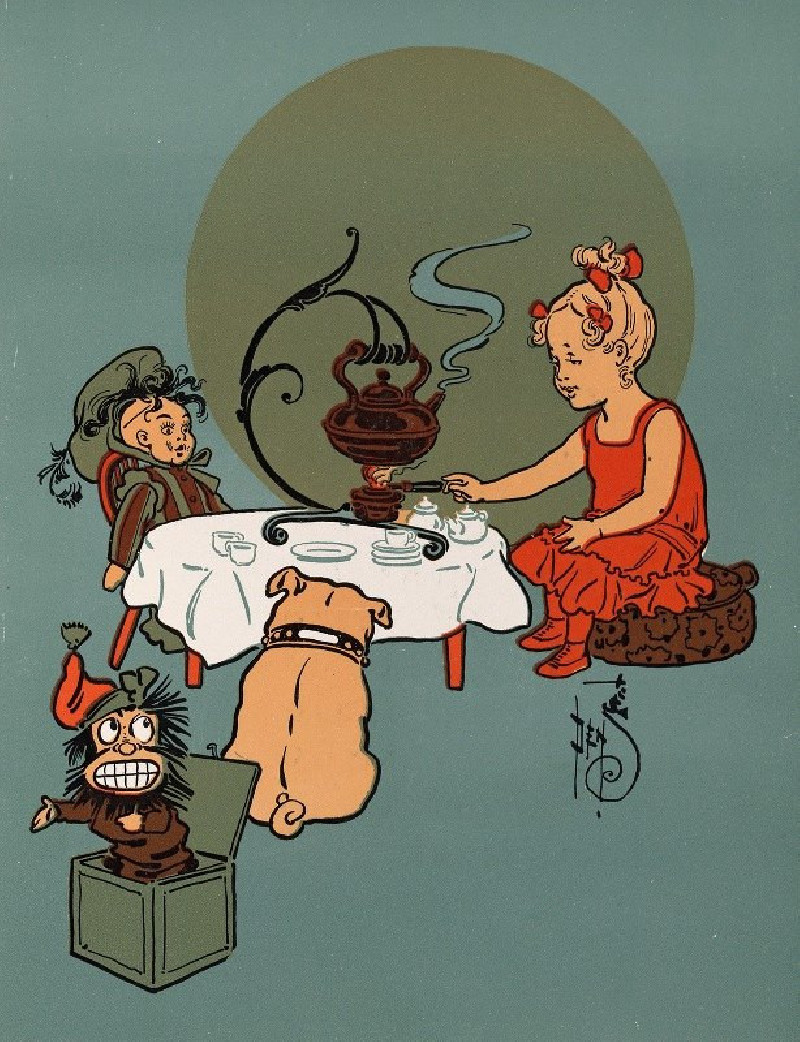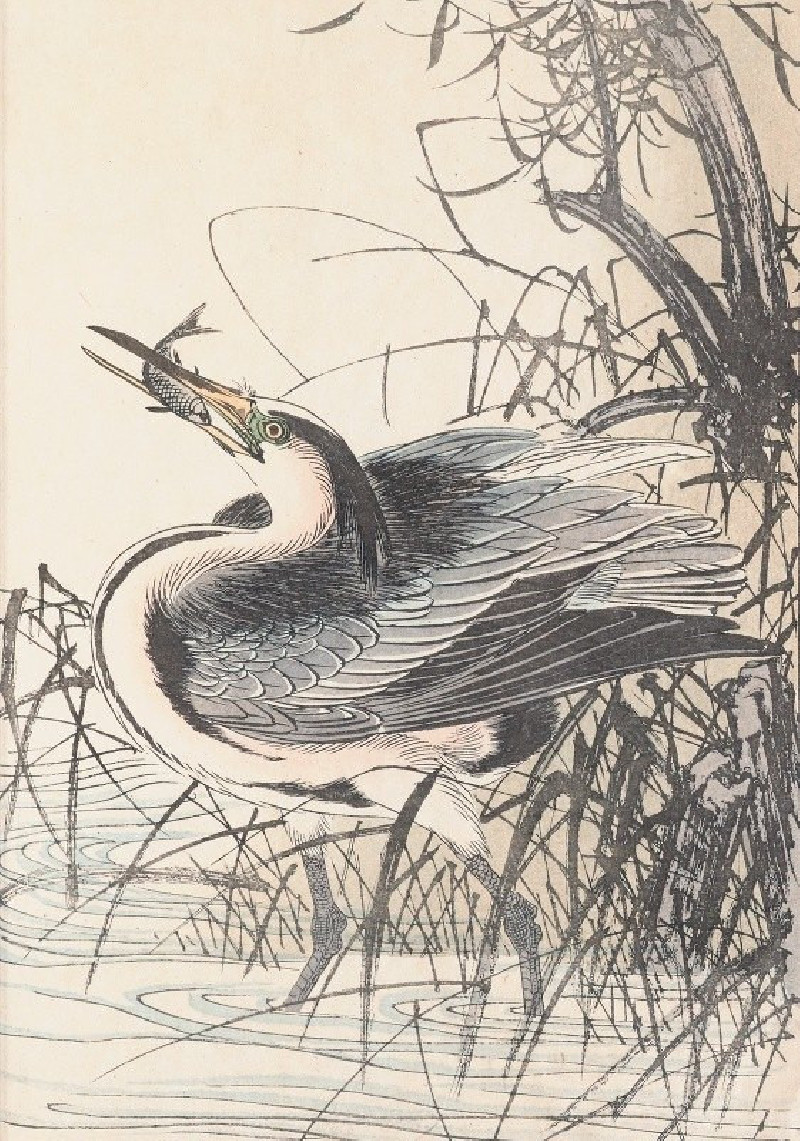Está Umd. …pues, Como digo…eh! Cuidado! si no! (You understand…well, as I say…eh! Look out! otherwise…) (1796-1797)
Technique: Giclée quality print
Recommended by our customers
More about this artwork
The painting "Está Umd. …pues, Como digo…eh! Cuidado! si no!" by Francisco de Goya, created during the years 1796-1797, is an evocative etching that captures a moment filled with tension and intriguing expressions. This artwork is a sterling example of Goya's critical eye and his ability to portray the complexities of human interactions.In this scene, three figures are depicted in an intimate yet somewhat chaotic interaction. The central figure is an elderly man, animatedly gesticulating with one arm, while he balances himself with a walking stick in the other. His facial expression, open-mouthed and wide-eyed, conveys a sense of urgent communication, possibly a warning or admonition, as suggested by the title of the piece.Flanking him are two other characters who contribute to the dramatic effect of the composition. On his left, another elderly gentleman listens intently, leaning forward, his features etched with concern or perhaps confusion. On the right, a figure with a deeply furrowed brow and eyes cast downward adds a somber note to the ensemble.Each character in Goya's work is rendered with exquisite detail, from the folds of their garments to the expressive lines of their faces, reflecting Goya's mastery over the medium of etching. The use of shadow and light not only highlights the physical features of the figures but also enhances the emotional depth of the scene.This piece is a fascinating study in human expression, interaction, and the portrayal of elderly figures, themes that recur throughout Goya's oeuvre.
Delivery
Returns
Francisco José de Goya y Lucientes (30 March 1746 – 16 April 1828) was a Spanish romantic painter and printmaker. He is considered the most important Spanish artist of the late 18th and early 19th centuries. His paintings, drawings, and engravings reflected contemporary historical upheavals and influenced important 19th- and 20th-century painters. Goya is often referred to as the last of the Old Masters and the first of the moderns.

